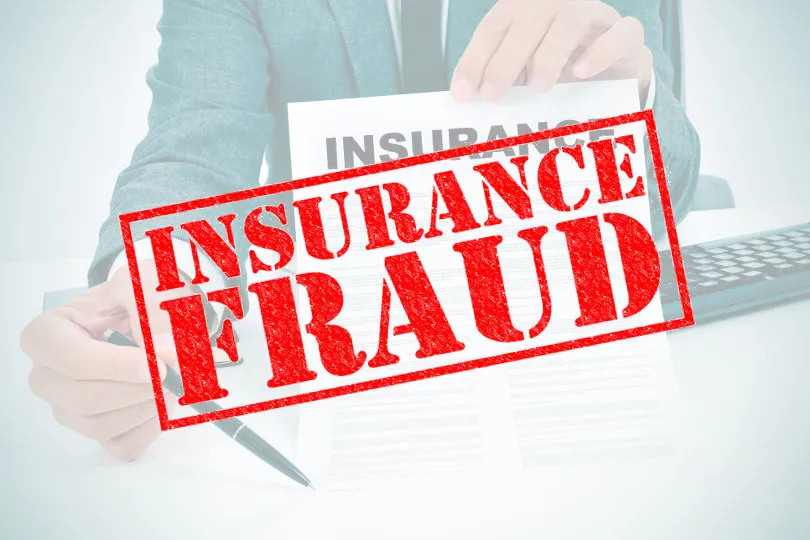Insurance fraud costs insurance companies $30 billion each year, which in turn results in consumers paying higher premiums for coverage. Fraud prevention must therefore be prioritized.
Simply put, trust but verify. Implementing policies designed to detect asset diversion helps companies detect and prevent fraudulent activity more easily.
1. Verify Your Customers
Insurance fraud is an issue across industries and its prevalence can range widely, though most schemes share common characteristics. People engaging in insurance fraud harm all other honest customers by driving up premium costs, and themselves by misusing money they own to commit crime.
Understanding where and when insurance fraud occurs can help you take steps to combat it effectively. Fraud can occur during any step in the application or claims processes – from premium diversion and fee churning, through false or exaggerated claims submission, payment issuance (ie bogus payments or insurance reinsurance), to payment receipt (bogus payments or insurance reinsurance).
An effective internal policy and stringent due diligence and KYC procedures that prevent asset diversion can help thwart this type of fraud, such as monitoring activity and events to detect any suspicious behaviors such as frequent policy revisions.
2. Verify Your Agents
Insurance fraud is committed when criminals use the insurance system to steal from innocent people, often through policies they take out on themselves. Most property-casualty insurers employ special investigative units (SIUs) dedicated to uncovering and preventing this kind of theft from occurring – these units work alongside law enforcement, technology experts and the National Insurance Crime Bureau (NICB) to identify, deter and stop insurance criminals.
Investigations are essential in maintaining the integrity of the industry and guaranteeing fair rates for legitimate customers. Fraudulent claims cost companies billions each year – an expense ultimately passed on to policyholders. Fraudsters often employ others to assist them in legitimizing their false claims. For instance, they might hire a mechanic to falsify repair documents, a police officer to file false reports, or even a doctor to provide false medical documentation.
3. Verify Your Policies
Insurance fraud comes in various forms and hurts multiple industries. False claims often consist of exaggerated damages or incidents created outright to make fraudulent claims more enticing to buyers, with buyers often being the source of such misconduct themselves; internal fraud such as fee churning is another threat facing insurers; therefore companies need a system in place which monitors transactions to make it harder for employees to hide their tracks and commit insurance fraud.
Though some insurance companies are turning more and more to high-tech methods for combatting insurance fraud, most still rely heavily on human reviewers in most of their cases. While this approach can be costly in terms of fighting it and passing losses back onto consumers via higher premiums, “trust but verify” remains truer than ever when dealing with insurance fraud prevention.
4. Verify Your Claims
Insurance fraud is an enormously damaging crime in the US, accounting for an estimated annual fraud loss of $308.6 billion. Not only does insurance fraud harm companies targeted, but it also leads to higher premiums across the board. Insurance fraud takes many forms, from hard (faking accidents or thefts) to soft (exaggerating claims). Many property-casualty insurers have established special investigation units (SIUs) within their organizations to investigate suspicious claims.
These teams consist of experienced professionals working closely with law enforcement agencies and the National Insurance Crime Bureau to detect, prosecute, and deter insurance criminals. Together they make it possible to reduce fraudulent activities that contribute to increased premiums – leading to reduced fraudster activity overall and therefore helping bring premium costs down for everyone.
5. Verify Your Company
Insurance fraud is an egregious crime with devastating economic repercussions; according to estimates from the Coalition Against Insurance Fraud, insurance fraud costs Americans an estimated annual sum of $308.6 billion. Fraudsters cost American citizens dearly, leading to higher premiums across the board. That is why it is crucial that everyone, not just insurance investigators and underwriters, understands how fraud works and can identify red flags.
Most insurance fraud schemes are multifaceted and perpetrators often enlist other parties to assist them with legitimizing their claims. For instance, someone engaged in automobile insurance fraud might enlist the services of a mechanic to forge documentation substantiating repairs that never took place, or hire a doctor to document nonexistent injuries; often these parties receive financial rewards for participating.
6. Verify Your Policies
Insurance fraud is one of the costliest white-collar crimes in America, second only to tax evasion. It costs both consumers and businesses millions annually in premiums; common forms include exaggerated or false claims being presented as valid claims. Utilizing security solutions on insurance applications and online forms helps mitigate fraud risk by automating review procedures, and making it harder for employees to conceal their actions. Monitoring changes to policies helps detect premium diversion or fee churning which are both forms of soft fraud.
Insurance fraudsters usually act out of greed; however, some individuals may not understand that what they’re doing is illegal. Raising awareness among the general public about its consequences could help dissuade individuals from engaging in this life-altering crime – this applies equally to employees who embezzle company funds.
7. Verify Your Company
Insurance policies offer financial security to their policyholders; unfortunately, fraudsters often attempt to break this promise through insurance fraud. Insurance fraudsters face both financial losses and criminal charges, including possible jail time. Insurance fraud is the second-costliest white-collar crime, costing American citizens billions each year in fraudulent claims and premium increases.
To combat insurance fraud, companies should begin verifying customers from the beginning of their relationship. Using big data analysis techniques, companies can identify suspicious activity and fraudsters – for instance, a sudden change in an insured’s address could indicate account takeover fraud or fee churning activities; while a clear document trail of an agent’s duties and typical conduct may help identify such activities more easily.
